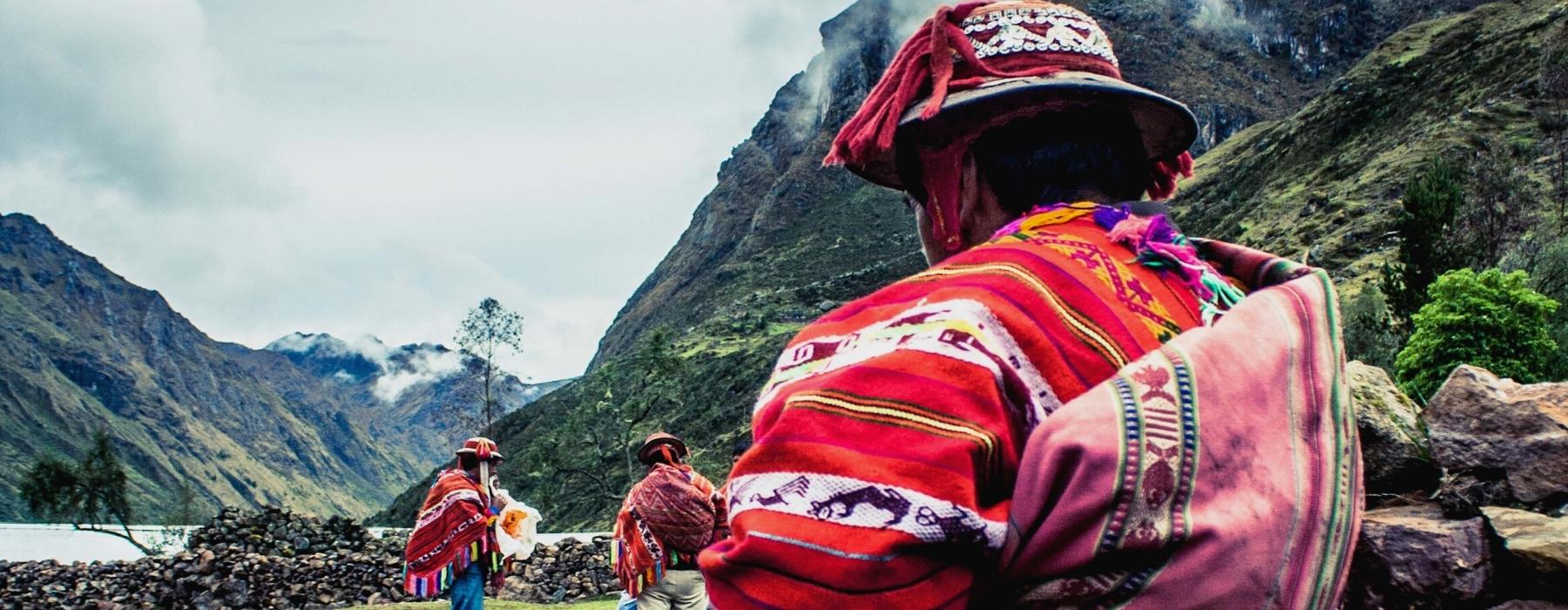
The Inca Trail hike to Machu Picchu through Lares is one of the many options of the Inca Trail that leads to Machu Picchu. Every Lares trek to Machu Picchu includes some transportation from Huaran to Ollantaytambo and from there you take a train to Aguas Calientes, most choose to do it in 4 days. Of those 4 days, you are effectively only trekking for 3 days. The fourth day is spent in Machu Picchu, the lost city of the Incas. As for the actual itinerary of the route, there are a number of variations on the Lares trek and most of them end in Ollantaytambo.
The Lares trek is not just an alternative to the overloaded Classic Inca Trail hike to Machu Picchu. The Lares trek has a lot to offer for people looking for a combination of nature, history and local culture. The walks depart from Cusco and take you to the Lares hot springs. Before you tie your laces and get ready for the hike, you’ll relax your muscles in the hot springs. After you have enjoyed the hot water, you will want to take it easy, so on the first day you only walk for about 2 hours.
From the town of Quiswarani (sometimes also Wacawasi) the trek continues through the 4,300m high Condor Pass to the community of Canchachanca. This is where the tour distinguishes itself from others in the Cusco region. You will most likely interact a lot with the local Quechuas. The last section to Huaran or Pumamarka is the crown of the route. Here you prepare little by little to discover the icing on the cake, Machu Picchu.
Lares Trek Peru is a couple of days hike, and the beginning of the road is from the sacred valley of the Incas. So this Lares Adventure in Peru is quite famous for the mountain lovers with connection to Machupicchu Inca site and recommended trekking in an organized group since this hike is through the Andes mountain.
Moreover, this trek goes through some remote villages, where live the living Culture people in houses made of stone and thatched roofs, also they farm different types of potatoes in an organic way since they fertilize the soil with the llamas and alpacas animals manure, so that means they raise these native llamas and alpacas, through the Lares trek mountains.
Furthermore, this Lares Trek In Peru is one of the well-recommended trail, as an alternative to the traditional Inca trail hike to Machupicchu. It is a slightly hilly road and higher in altitude than the traditional Inca trail hike to Machu Picchu, and the most important no needing an official permit neither is limited the number of people to hike Lares Trek in Peru with connection to the Machu Picchu city.
The Lares Trek is dubbed the Ultimate Cultural Trek. On the Lares Trek, you don’t just get to experience the thrill of hiking a part of the Inca Trail hike to Machu Picchu system, you actually get to meet the descendants of those people who built the Inca Trails and Machu Picchu. It gives your Inca Trail hike to Machu Picchu experience so much more color and it also adds context to your visit to Machu Picchu.
Another drawcard for the Lares Trek is the fact that you don’t need any trekking permits. You just need a ticket for Machu Picchu, but this isn’t as much of a hassle as the permits for the Classic Inca Trail hike to Machu Picchu. All trekking packages for the Lares Trek include tickets for Machu Picchu.
If you’re looking to make trekking a significant part of your Machu Picchu journey, these two trails are without a doubt your best options. Though the two trails are quite similar in a number of ways, in others they are also very different. If you’d prefer a shorter multi-day hiking option.Travelers struggling to decide between the Inca or Lares treks often turn to the internet for help, scouring forums, blogs, and tour company sites for the best information regarding the Inca Trail hike to Machu Picchu vs. Lares Trail debate. Of course, the internet being what it is, sometimes this research only leads to further confusion and more questions.

In order to simplify your decision as much as possible, we’re going to share with you our take on the Inca Trail hike to Machu Picchu vs. Lares Trail question. We’ll take a quick but in-depth look at each trek’s attributes, providing you with an accurate and unbiased analysis of each trail. In this way, you can make the best decision possible for your Machu Picchu adventure!
Certainly the more famous of the two treks, the Inca Trail hike to Machu Picchu is undoubtedly more widely-renowned than its lesser-known cousin. If the purpose behind your journey is simply to brag to friends and family upon arriving back home, the Inca Trail hike to Machu Picchu is definitely the way to go – but we hope you’d never make your decision for so frivolous a reason!
Of the two treks, the Inca Trail hike to Machu Picchu is definitely the more historic option. Before arriving at Machu Picchu, the Inca Trail hike to Machu Picchu passes through a variety of Inca ruins sites unreachable to tourists by any other means – and while Machu Picchu can famously become quite crowded with tourists, you’re sure to find each of these sites comparatively quieter and more calm.
Another deciding factor for many visitors who choose the Inca Trail hike to Machu Picchu is the fact that it is the only way to arrive to Machu Picchu through the ancient city’s famed Sun Gate. This experience is so beautiful that it can be emotionally overwhelming, and many visitors look back to find it one of the most memorable moments of their lifetimes. It’s hard to explain the value of this experience to those who haven’t felt it themselves, but suffice to say it’s a deciding factor in the Inca Trail hike to Machu Picchu vs. Lares Trail debate for many visitors.
That being said, there are some potential downsides to the Inca Trail hike to Machu Picchu. Because of its immense fame and popularity, it’s necessary to plan your trip months – and sometimes in the high season nearly a year – in advance. 500 trekkers are allowed on the trail daily – about half of whom are guides and porters – and so it can be hard to find a spot. In addition, the result is that the trail can at times feel somewhat crowded, especially if you’re seeking a more solitary experience.
First of all, one good thing about the Lares Trail is that it is slightly less physically-taxing than the Inca Trail hike to Machu Picchu – but that’s not to say it’s without difficulty. It’s approximately 33 kilometers vs. the Inca Trail hike to Machu Picchu 45 kilometers. Both feature plenty of altitude gains and steep descents, though once again the Inca Trail hike to Machu Picchu beats out the Lares Trail slightly on this front.
Compared to the Inca Trail hike to Machu Picchu, the Lares Trail is far less of a fixture on the tourist circuit. This means that there’s no competition for passes, booking as far in advance is not necessary, and the trek will involve more privacy, from other tourists, at least.
Which brings us to another big difference between the two trails: while the Inca Trail hike to Machu Picchu passes primarily through ruins and uninhabited areas, the Lares Trail passes through villages and farms inhabited by modern-day Andean people, the descendants of the Incas who built Machu Picchu. During your trip, you’re bound to have many opportunities to interact with Peru’s indigenous people, making the Lares Trail a cultural experience in a way that the Inca Trail hike to Machu Picchu simply is not.
The primary downside to the Lares Trail is the fact that you don’t arrive to Machu Picchu via the Sun Gate.
Even so there’s no clear answer to the Inca Trail hike to Machu Picchu vs. Lares Trail question—it’s all about your own personal preferences and what you expect to get out of your Machu Picchu trip.
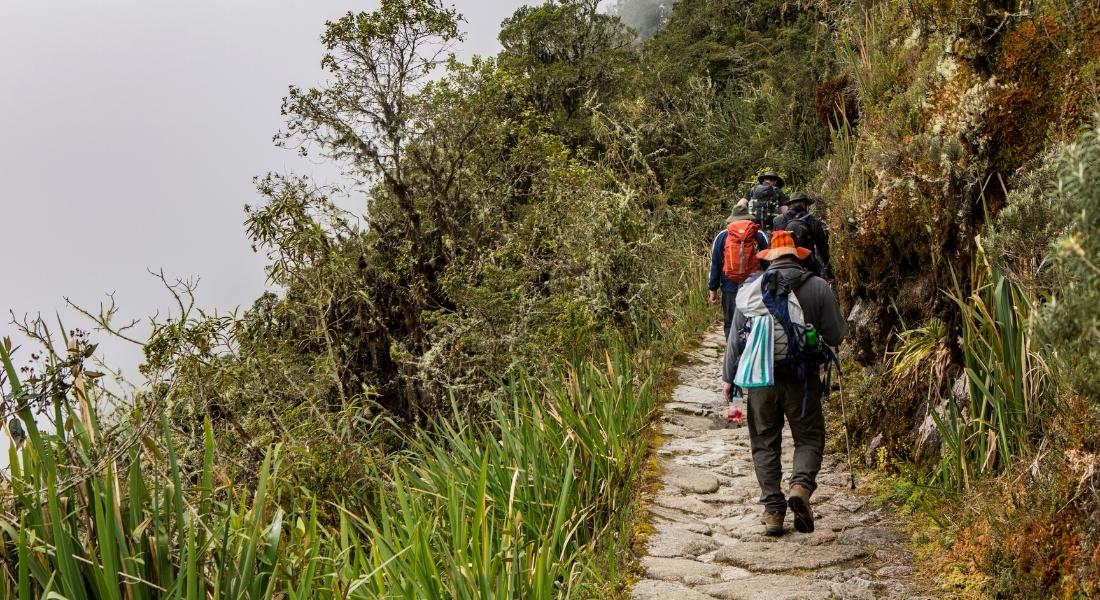
INCA TRAIL HIGHLIGHTS
INCA TRAIL LOWLIGHTS
LARES TREK HIGHLIGHTS
LARES TREK LOWLIGHTS
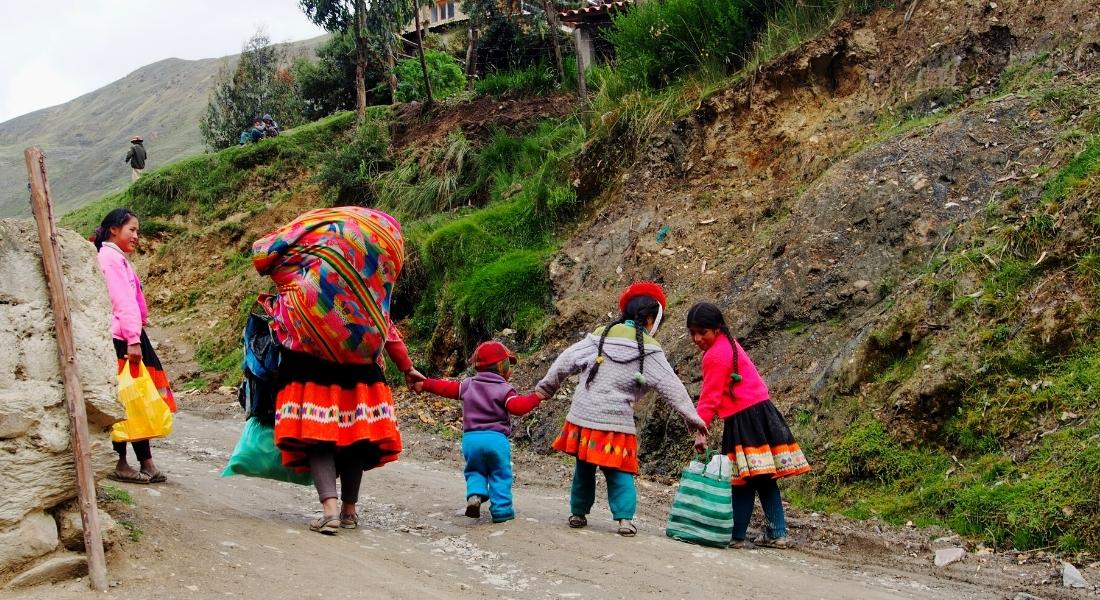
| INCA TRAIL | LARES TREK | |
| Difficulty | Hard | Moderate to hard |
| Duration | 4 days | 4 days |
| Remoteness | Remote inca trails | Remote Andean villages |
| Maximum atitudes | 4,200 m | 4,450 m |
| Accommodation | Camping | Camping & hotel |
| Best seasons | April – October | April – October |
| Permit required to visit Machu Picchu | Yes | Yes |
If you want to complete a trek in the Sacred Valley and it is not important to you to arrive at Machu Picchu itself on foot, then the Lares trek offers a more rewarding and authentic trekking experience. The Lares trek is suitable for those with limited time since it is shorter than some of the other alternative treks to the Inca Trail hike to Machu Picchu. Only two nights are spent in tents while the third night is spent in a hotel in Aguas Calientes. Trekkers will return to Cusco after a visit to Machu Picchu on the fourth day.
This trek is slightly less challenging than the Inca Trail hike to Machu Picchu but still not an easy trek. What makes the Lares route unique is that it passes through several traditional mountain villages where the way of life has changed little over the centuries, giving participants the chance to meet local people and even try traditional craft activities such as weaving.
The Lares trek is one of the less commonly attempted alternatives to the Inca Trail hike to Machu Picchu, which means it will give participants a much more authentic wilderness experience. The Lares trekking route takes trekkers off-the-beaten-track and along paths where fewer tourists venture while still not straying too far from civilization
Yes it is necessary, most tourists suffer from altitude sickness, body imbalance, among others, due to lack of acclimatization, but rest assured! It is completely normal and natural for our body to react to changes in height, temperature, change in diet, among other factors.
If you go on a long hike at a higher altitude than where you came from, you can take advantage of the acclimatization period by doing light physical activities without putting too much strain on your body. An acclimatization period of three days is recommended; It is suggested that the first day you rest, if you start to suffer from altitude sickness you can drink Coca leaf tea (highly recommended natural remedy) or a pill for altitude sickness, if the situation worsens remember to consult a doctor before self-medicating. If all goes well, then from the second day you can do short jogs, yoga, aerobics.
If you miss this acclimatization period, it is likely that your body may suffer a decompensation in the middle of the route and it could be dangerous if you are very far from a health center, the staff would have to take you to the nearest health center and they would be in a race over time in case you are in very poor health. All travel agencies carry a first aid kit and the staff constantly receive training in first aid, among others, but sometimes it is not enough if the situation gets out of control and worsens.
Remember that your health is very important!
The weather during the walk is cold and temperate since it is located within the provinces of Calca and Urubamba. Likewise, these provinces have two very defined seasons such as:
Rainy season:
This season includes the months of November to March. During these months there will be rainfall, mighty rivers. Therefore, the roads will become bumpy and the sky will always be cloudy; As for the temperature, the maximum registered is 18° C and drops to 7° C.
Dry season:
This season includes the months of April to October. During these months it is advisable to take walks; because the roads are in better condition. However, the presence of rains is very occasional and snow is rarely present in higher altitude areas. Of course, the months of June and July are frost season. Therefore, these months will be colder than usual with the presence of snow.
During this season the maximum temperature is 22° C and the minimum is 2° C.
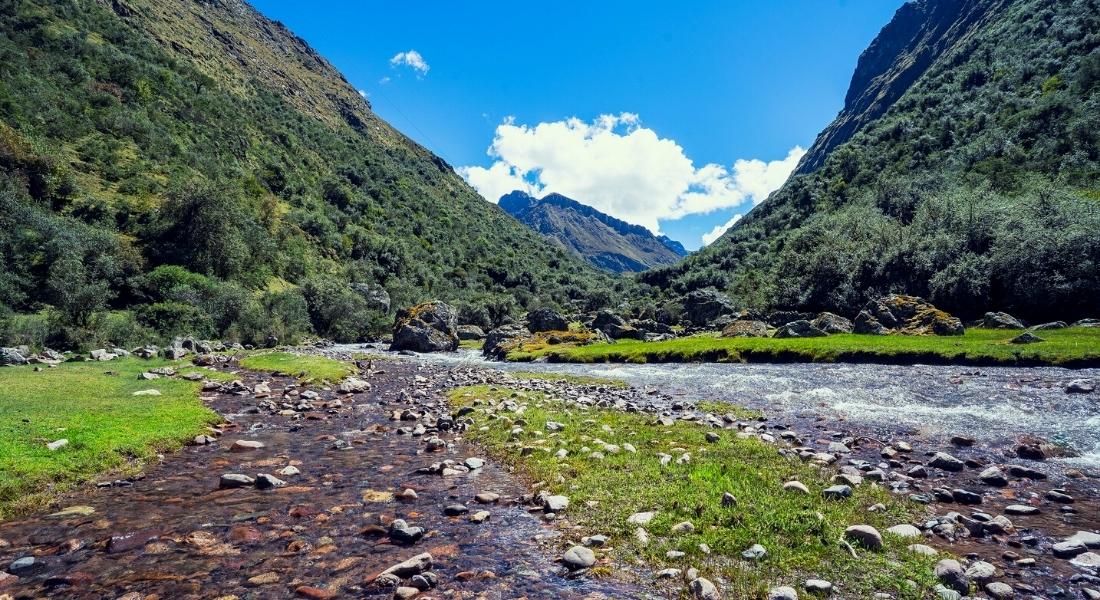
It is recommended to do the Lares Trek during the dry season between the months of April to October. Because in this season the presence of rain is minimal. The roads and highways will probably be dry. During the months of June and July there is presence of snow during the first night. The presence of this weather phenomenon is due to the intense frost that is very common in the high Andean areas of Cusco. Therefore, it is recommended to bring warm clothing.
Before you embark on your trekking adventure, you will meet with our Trekking Operations Manager for an extensive briefing. Route, safety procedures and health issues will be discussed in detail and you have enough time to ask any remaining questions. Your trekking gear will be inspected to ensure that you have everything you need to be safe and comfortable. If you are missing any gear, you can rent it from us.
During your LARES TREK, you only carry your small backpack with essentials such as water for the day’s hike. Our Horses will carry all equipment, food and additional luggage.
Our permanent mountain guides will lead the way. They are responsible for your safety and will encourage you and lend a helping hand, but also call the trekking off due to weather, altitude sickness or injury, if necessary. Your safety is paramount to us. Most of our mountain guides have been part of our team for many years, been at Machu Picchu hundreds of times and all receive regular training. You are in good hands.
Our cooks are miracle workers. With simple gas cookers, they conjure up 3-course feasts, hot drinks and snacks to revive and nourish you when you need it most. Drinking water comes from mountain streams and is boiled before you drink it.
On LARES TREK to Machu Picchu, you will sleep in high-quality two-person tents. The tents will be pitched and taken down by our team of porters. When you arrive at camp after a long day’s hike, your tent will already be waiting for you. While there are no showers on the camping routes, you will be provided with a bowl of hot water in the morning to start the day fresh.
This walk is not very challenging, the only day in which you will have more physical effort will be the second day. Because part of the route is uphill until you reach the highest point of the entire tour. Next, descend for approximately 4 hours to the camp; the other days will be easy to moderate walking level. However, it should be noted that to carry out any type of walk you must be in constant physical preparation.
On the first night of the Lares Trek, we stay at a community-owned campsite that features composting toilets, solar showers, and a solid-waste management system that’s the first of it’s kind in the region. On the second night, we’ll spend the night in three-person tents designed to accommodate two same-sex travellers. Trekkers will be served a bowl of hot water (and a hot drink) in their tents during morning hours. On the third night, we’ll stay at a comfortable hotel in Aguas Calientes.

We recommend that you bring a refillable water bottle as boiled water will be provided in the morning at breakfast, at lunch and every evening after dinner.
Andean Great Treks is proud to have the best staff of chefs specialized in high mountains, with more than 15 years of experience, in the different trekking routes in Cusco. On our Lares Trek we provide you with the best food service every day, our chefs will prepare meals with 100% fresh and organic foods, since our company is focused on community work and support for farmers who provide us with their best fruits. You can taste the best Peruvian and Cusquenian cuisine, during the breakfast we will have pancakes, omelettes, coffee, milk,butter, cereals, and very nutritious breakfast of Cusco based on oatmeal, quinoa, wheat, etc.
We recommend purchasing travel insurance if you plan to trek in Peru. Most of the trekking spots in Peru are very remote so if something goes wrong you will likely need an emergency evacuation and that can be incredibly expensive.
When choosing travel insurance, be sure to purchase a plan that covers high-altitude treks and helicopter rescue, just in case.
The most common Lares trek covers a 37 km pathway, starting in Lares Hotsprings, throughout Quiswarani camp to Huaran hamlet in the Sacred Valley. It involves a 3-day trek, and after the 37 Km hike, the adventure ends with a magical visit to Machu Picchu park on the fourth day.
The highest point to get to, when hiking the standard Lares trek to Machu Picchu, is the 15 400 ft / 4 700 mountain pass, a mountain pass by the name of Pachakuteq pass. And this mountain hike is completed on the second day of hiking, then on the third day is the entry on the Sacred Valley Ollantaytambo, and subsequently the train ride to Aguas Calientes town.
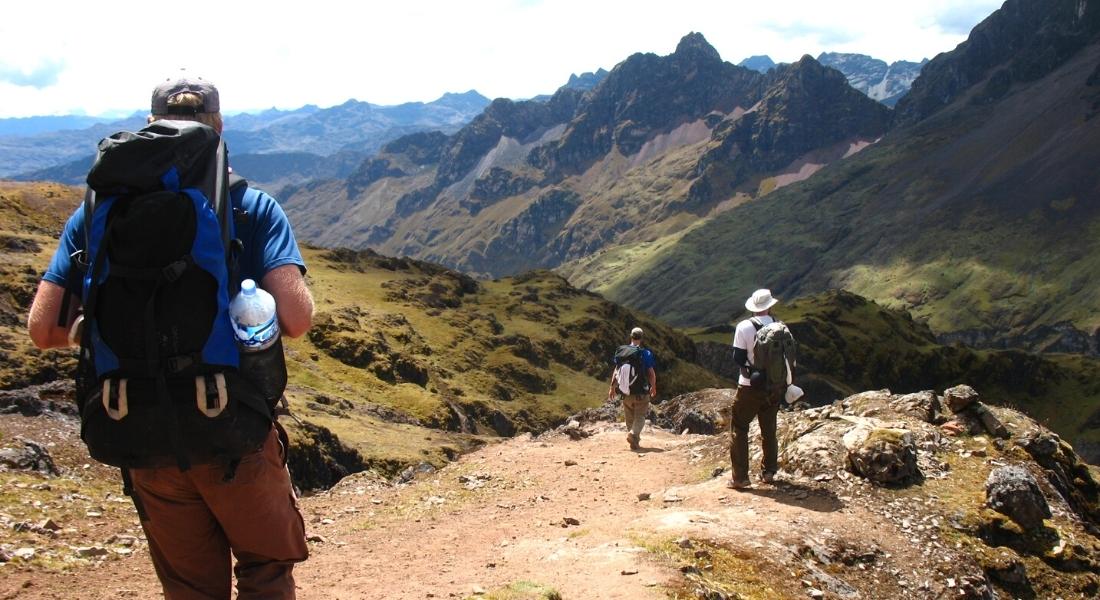
It has been highlighted by most of our clients, especially by lady trekkers, who want a private, clean and sanitary toilet!! Andean Great Treks toilet facilities have an individual tent and a “camping toilet with a seat.” Our toilet is always set up a comfortable distance from our campsite. At night if you need to use the toilet it is readily accessible and clean.There are hot showers and hot water pools to soak in and relax on the first day of your trek at the Lares Hot Springs. Be sure to bring your bathing suit.
In the scenario that you are unable to finish the lares trek due to a health issue, Andean Great Treks will assist you to the nearest town for help with transportation. We always carry oxygen on the trek for any respiratory problems In extreme cases, a helicopter pick up can be arranged at your own expense. (Travel insurance required). There are no refunds in the unlikely situation that you are unable to finish the Lares trek.
Generally, those who have to be assisted off the trail are taken to the Lares Village and then to Calca Town, and if they recover quickly, they then continue the journey to Aguas Calientes (cost incurred by trekker) and visit Machu Picchu according to original plan.
On all Lares Trek routes, you will cross many indigenous communities, who will receive you very happy for your visit, and will also offer you their handicrafts that they produce, if you want to support these people, do it, since the little, that they produce in their crop fields, it is not enough to lead a comfortable quality of life. Our friends of the high Andean communities are also very kind, do not worry when conducting an interview or a photograph, since your guide will be the one who can translate it so you can establish a conversation and thus learn more about their experiences and customs. It should be understood that these communities on the Lares Trek route are considered one of the last that still practice the traditions inherited from the Incas. They still perform ceremonies of offerings to the Pachamana or Mother Earth, coca leaf ceremony and the most important festivals according to the Quechua calendar.
It’s best to pack lightly for Lares Trek. Generally hikers leave the bulk of their belongings safely in storage at their Cusco hotel, and bring only their hiking pack for the trek. This list ensures that you have everything you need for a guided trek without overburdening yourself.
Mountain clothing
Head:
Thorax / Core:
Bottom:
Hands:
Personal Team
Hiking gear
Electronics
Toiletries
Others
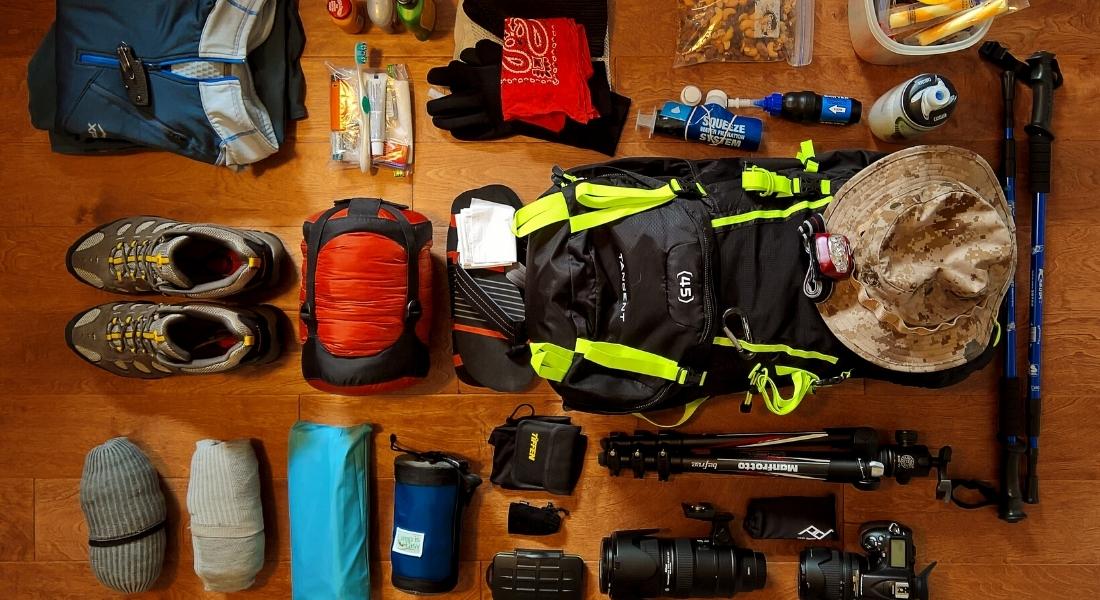
Yes, the Lares Trek include the entrance to the citadel of Machu Picchu. Therefore, on this route the visit to Machu Picchu takes place on the last day for a guide of 1 hour and 45 minutes. During this time the main centers of the Inca Citadel are visited, once the guide is over you no longer have the option of re-entering the citadel. For this reason, you should ask the guide for some recommendation to be able to spend a longer time inside the Citadel of Machu Picchu.
The visit time in the citadel of Machu Picchu is an average of 1 hour and 45 minutes to 2 hours, this time is the maximum that is used to be able to make the main circuit that contains the most outstanding sites of the Historic Sanctuary.
Note: You should know that there is no free time to visit on your own after the guide, unless you buy one of the extra hiking tickets (Huayna Picchu or Machupicchu Mountain) so you can re-enter the attraction.
Andean Great Treks has a work policy, to hire all its operations personnel from the communities surrounding the Lares Trek. This is how we provide the corresponding training to all kitchen workers, and muleteers on the work of serving tourists. On the Lares Trek route, our workers come from the communities of Pampa Llaqta, Cuncani, Quiswarani, Lares, Cancha Cancha, Wacawasi, Choquecancha.
FUNCTIONS OF THE CHEF IN LARES TREK
The cook is the person in charge of preparing food. During the first three days, the same one, who goes ahead together with the muleteer (person in charge of the mules) and mules (pack animals), to be able to prepare the food and make the tents, in this way, have everything ready for the arrival of passengers.
FUNCTIONS OF THE MULETEERS IN LARES TREK:
The muleteer is the person in charge of directing the mules, preparing the load, among others, the muleteer, like the cook, goes ahead to prepare all the equipment before the arrival of the passengers. He will be the support staff that will accompany the group until the third day.
It is necessary to clarify that this act is not obligatory, as much as the cook and the muleteer have a remuneration for the services rendered. However, the donation is voluntary. But, it became customary over the years, in part, it is a way of contributing to the economy of these workers since they are mostly low-income people from rural areas.
Therefore, leaving your donation will be a way to encourage these people to continue carrying out this activity.

Archaeological Park of Ollantaytambo
It is located in the district of Ollantaytambo, with an area of 34,8000 hectares, located and adapted to the topographic profile of the land and is made up of two sectors: Qosqo Ayllu (current town) and Araqama Ayllu (where the ceremonial sector is located). ) complemented with agricultural areas (system of terraces) and storage for corresponding to an administrative and religious center. The Qosqo Ayllu sector presents an orthogonal urban configuration whose housing units are established by the Inca “kanchas” with a rectangular floor plan, with double-jamb trapezoidal access openings built with lithic material with a set rigging. The Araqama Ayllu sector (ceremonial sector) is accessed through the old Manyarqui plaza and is characterized by monumental constructions in adobe and stone. In the lower part there are enclosures that reach a height that varies from 2.20 m. at 7.00 m. built in adobe and that are associated with ceremonial water sources, highlighting “the Ñusta bath”, which corresponds to a fountain carved in a single piece of granite.
In the upper part, the Temple of the Sun stands out, which corresponds to a structure made up of six large carved rocks, associated with an “Intihuatana” and enclosures that were used as astronomical observatories. Currently this sector is in a good state of conservation, due to the fact that maintenance work is being carried out by the Ministry of Culture.
Pinkulluna Archaeological Site
It is located within the Archaeological Park of Ollantaytambo, it has an area of 8400.00 m2, located on a rocky outcrop in the upper part of the district, currently considered as a sacred hill of a productive and ceremonial nature. This architectural complex is made up of three rectangular-shaped enclosures with 14 access openings, with windows on the façade, with a height between 4.00 and 7.00 m. built with lithic material (slate) and joined with mud mortar, where you can see the treatment of the floor and walls plastered with mud, in a fair state of conservation
Choquecancha Ushnu Archaeological Site
It is located in the district of Lares, it has an area of 300.00 m2, it is located on a prepared plain around an open space (currently delimited by the temple, houses, medical post and communal hall); it is a ceremonial enclosure defined as “Ushnu”, it has a main access opening with a double jamb, 14 trapezoidal niches and 17 niches built with schist-slate-type stone with yellowish mud mortar, it can also be seen that the walls They have a 10% incline. The state of conservation of this structure is poor due to the fact that currently the upper part of it is occupied by the dwellings of the inhabitants of this populated center.
Hawqani Archaeological Site
Located in the district of Lares, with an area of 40.00 hectares, located in a chain of steep cliffs and steep hills, formed by outcrops of metamorphic rock, on which this important archaeological site was built, which is located made up of various sectors such as: Manto, Qoriwayrachina, Chaupimarka, Llukumarka, Hawqani, Taqeorqo, Machuyoq, among others; that flank the banks of the Lares and Amparaes rivers. It corresponds to a settlement that fulfilled functions of a residential, administrative, ceremonial and productive nature; strategically occupying the valleys and slopes of the Lares and Amparaes rivers. It is made up of rectangular, circular and ovoid-shaped enclosures, associated with agricultural terraces (andenerías) that were built with slate schist stones with mud mortar.
Markaqocha Archaeological Site
It is located in the district of Ollantaytambo, it has an area of 6,000.00 m2, and is located on a river terrace, where you can see enclosures, chullpas, qochas, etc., with rectangular enclosures and circular chullpas. Some enclosures have access openings and trapezoidal windows, being observed in certain mud plastered walls. The walls of the enclosures reach a height that varies from 1.20 m. at 6.50 m. whose construction material is slate stone, joined with mud mortar. The place was of a ceremonial and residential nature having pre-Inca and Inca cultural affiliation.
Pumamarka Archaeological Site
Located in the district of Ollantaytambo, it has an area of 800.00 m2, made up of enclosures, warehouses, walls, chullpas, etc.; the enclosures have a rectangular floor plan and the qolqas have a circular floor plan with trapezoidal access openings and windows of similar characteristics, on the walls there is evidence of plastering with mud. The building material is limestone and slate type stone, joined with mud mortar. The place had a residential and military character in the Inca era, For being surrounded by walls that surround the entire site.
Ancashmarka Archaeological Site
Ankasmarka, a Quechua word that translates as the city of the eagle; cradle of important pre-Inca and Inca inhabitants. It is a city built in a strategic place in the valley and the Andes, in this place there are trails, food deposits, Inca roads and many agricultural platforms.
The Sacred Valley of the Incas is one of the places that you cannot miss on your trip to Peru; the great constructions legacy of the pre-Inca and Inca cultures strategically located in this earthly paradise, with impressive landscapes and beautiful skies as in Ankasmarka; when the sun shines on them. Its geographical configuration makes it an ideal place for rest and walks.
You can see more than 600 constructions dating from the pre-Inca and Inca times, rustic rigging with mud as a final finish, the constructions that have a circular shape; local stones were used for its construction, especially slate stone and mud. The diameter of the constructions are 4 by 3 meters in diameter with a door of one meter.
In the lower part there are other types of constructions, they are rectangular structures these were intended for housing. It crosses the side of the Cha’ipa stream. We can also see remains of an ancient Inka road, which is still used to this day. Ankasmarka was a populated center and its inhabitants dedicated themselves to grazing, especially the camelids.
Unu Urqo
This archaeological complex is located in the Sacred Valley of the Incas, very close to the city of Calca (about two kilometers away) and at an altitude of 2,930 meters above sea level. From the road that connects Urubamba with Calca we can see a beautiful terrace completely rebuilt with edged stone and that today its wide terraces are still used for growing corn.
This place consists of a huge rock that reaches six meters high. It resembles a toad and appears to have been worked on. His head is facing east. Opposite the head is the grooved body of a snake through which the water slid until it flowed into a well-carved fountain imitating the head of a snake with large round eyes.
Around the Waca there are other smaller and well distributed enclosures. In several of these enclosures we can see different niches and access doors. The material used for all this sacred complex is stone cut and joined with clay mortar.
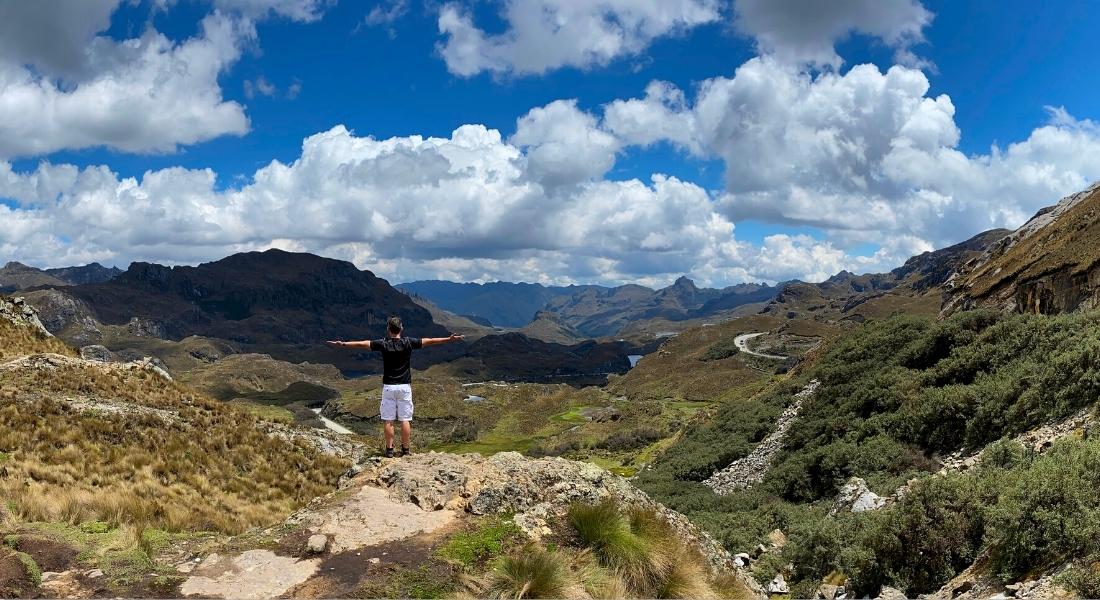
During the route of all the sections of the Lares Trek, terrestrial and freshwater ecosystems can be seen, whose conditions and distribution are affected by the Andes mountain range, for this reason all these formations are considered Andean ecosystems, they are the least known and the most threatened, mainly by deforestation and degradation due to the expansion of agricultural activities.
Life zones and ecosystems of the Lares Trek
The section from Lares to Huaran, is made up of different ecosystems, the climatic characteristics and the physiography of the tropical Andes constitute a unique region with a high diversity of habitats, product of complex spatial and environmental gradients of the Andean mountain range, in addition to the landscapes They are made up of associations of grasslands and puna grass, humid-thorny thickets and high Andean forests, where a high diversity of flora and fauna develops, as well as important endemic species; This variety of plant formations due to climate and physiography allow man to grow crops of different varieties, favoring the expansion of populations in these areas.
a.- Humid Scrub of Inter-Andean Valleys:
This plant formation is characterized by the predominance of a dominant bushy vegetation, semi-dense and they can measure up to 3 meters in height. These thickets develop in the ravines located between the inter-Andean and Meso-Andean valleys, from 2,500 to 3,800 meters above sea level.
Associated with the bushy vegetation it is possible to find some tree species of humid habitat. The most frequent species are: Escallonia resinosa, Escallonia mytilloides, Baccharis latifolia, Baccharis chilco, Baccharis sp, Berberis boliviana, Berberis carinata, Berberis lutea, Monnina salicifolia, Oreopanax sp, Brachyotum sp, Mirsine andina, Duranta armata, Saracha punctata and others. At present, a small proportion of herbs and shrubs are extracted from these thickets for domestic purposes (medicine, firewood, etc.), they are also subjected to extensive grazing by cattle and sheep, as well as opening areas within these thickets for agricultural activity.
b.- Sub-humid Wooded Scrub of Inter-Andean Valleys:
They are characterized by the predominance of shrubby vegetation associated with tree species, which are scattered; these wooded thickets can reach heights of 4 to 5 meters. This type of vegetation is located from 1,300 to 3,800 meters of altitude and develops on undulating to very rugged reliefs of the inter-Andean valleys of the Vilcanota Basins.
The tree species that occur in these thickets are: Oreopanax ichnolobus, Saracha punctata, Saracha spinosa, Duranta mandonii, Duranta armata, Gynoxys spp, Hesperomeles escallonifolia, Smallanthus sp, Boconia sp, Vallea stipularis, Escalonia resinosa, Escallonia myrtilloides, Polylepis racemosa, etc. The species of shrub layer are predominant in this type of vegetation, whose most important species are: Colletia spinosisma, Baccharis odorata, Baccharis chilco, Barnadesia horrida, among others.
At present, these wooded thickets are subjected to a selective extraction of shrub species for domestic use, and a small proportion of shrub and herbaceous species are used for all kinds of purposes.
c.- Puna grasslands:
It is characterized by the presence of grasses or grasses with a height of 50 cm, these grasslands are developed in areas with moderately inclined slopes and on stony slopes: The species that predominate in these grasslands are: Agrostis perennas, Aciachne pulvinata, Agrostis pulvinata, Calamagrostis rigescens, Calamagrostis vicunarum, Calamagrostis amoena, Calamagrostis heterophylla, Festuca orthophylla, Festuca dolychophylla, Festuca orthophylla, Poa spp; These grasslands are associated with shrubby herbaceous vegetation, whose important species are: Hypochoeris taraxacoides, Alchemilla pinnata, Arenaria lanuginosa, Cerastium triviale, Bomarea dulcis, Bomarea dolichophylla, Halenia bella, Gentianella sp, Gentiana postrata, Arenaria lanuginosa, Perezia pungens, Werneria villosa, Bidens triplinervia, Gnaphalium dombeyanum, Gamochaeta americana, Gamochaeta purpurea and others.
d.- Puna grass:
This type of vegetation is located in the highest parts and is characterized by associations of grasses and herbs of small size, they are located between the warmest parts and less exposed to climatic variations and edaphic conditions. favorable. The most important species of this plant formation are: Calamagrostis vicunarum, Calamagrostis minima, Calamagrostis ovata, Calamagrostis rigescens, Stipa mucronata, Oriethales integrifolia, Poa humillina, Paspalum pigmaeum, Carex sp, Agrostis sp, Hypericum sp, Aciachne pulvinata, Lepechinia meyenii, Festuca rigescens, Muhlembergia peruviana, Paspalum pigameum, Aciachne pulvinata, Azorella biloba, Hypochoeris spp, Eleocharis retroflexa, Luzula peruviana, Trifolium sp, Gentiana postrata, Gentianella spp, Muehlembeckia volcanica, Solanum acaule, Viola sp, Valeriana sp, Senecio sp, etc.
e.- Andean wetlands:
They are characterized by presenting dense associations of herbaceous stratum species, which occupy places with gentle to slightly inclined slopes and on soils covered with water, due to the presence of streams from water sources of glacial origin or of aquifers. They are home to a diversity of herbaceous plant species
f.- Humid Forest of Inter-Andean Valleys:
This type of forest is characterized by being located in the humid ravines of the inter-Andean valleys, from 2,600 to 3,800 meters of altitude. They present a dense tree vegetation with a height of up to 10 meters. The tree species that predominate in these forests are: Myrcianthes oreophylla, Myrcianthes indiferens, Duranta mandonii, Duranta armata, Hesperomeles lanuginosa, Weinmannia spp, Citharexylum herrerae, Citharexylum dentatum, Gynoxys aff nitida, Gynoxys longifolia, Buddleja montana, Escallonia resinosa, Escallonia myrtilloides, Polylepis racemosa, Saracha punctata, Sambucus peruviana, Alnus acuminata, Aegiphila morototoni, Juglans neotropica, Clusia sp, Erythrina edulis, Buddleja coriacea, Buddleja longifolia, Myrsine pseudocrenata, Myrsine andina, Hesperomeles escallonifolia, etc. The most important shrubby species are: Brachiotum naudinii, Baccharis odorata, Baccharis chilco, Baccharis latifolia, Piper sp, Maytenus sp, Acalipha aronioides, Barnadesia horrida, Senna birrostris, Berberis spp, Rubus sp, Calceolaria engleriana, Calceolaria spp, Satureja boliviana, Rubus roseus.
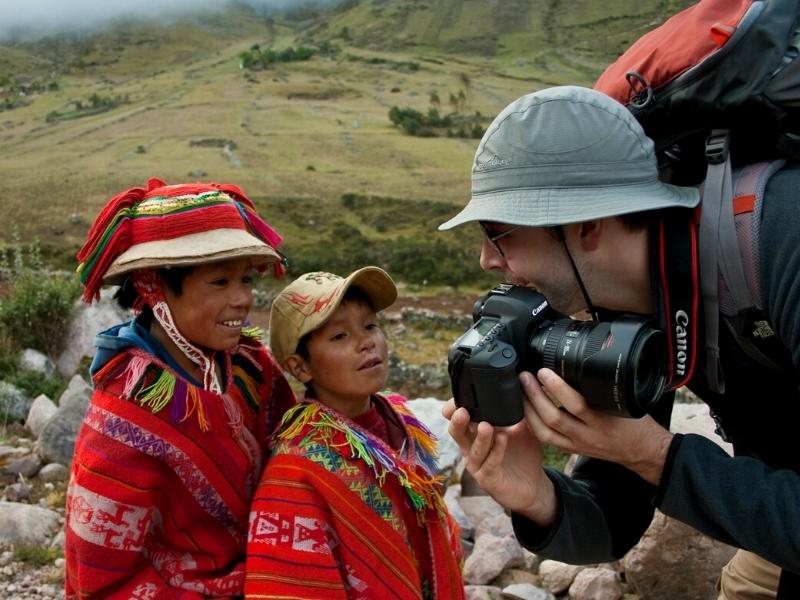
The Lares Trek combines high Andean trekking with a chance for genuine interaction with the most isolated indigenous communities which keep the inca culture alive. Majestic glaciers, amazing glacial lakes, waterfalls, llamas, and alpacas.

The classic Inca Trail hike to Machu Picchu is one of the world's greatest hikes. Along the 45 km you will explore unique andean valleys, lush mountain forest.An exquisite architecture of the Inca sanctuaries, which will dazzle you for its fineness and location within the Andes.
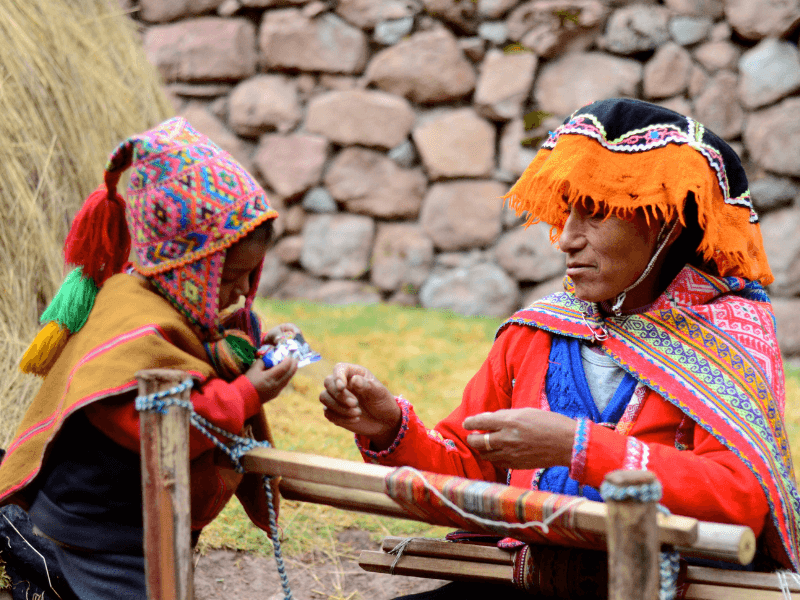
Embark on an incredible Cusco Andean exploration through Lares trek with a taste of the iconic Inca Trail to Machu Picchu, through the Sacred Valley of the Incas.

Explore the Lares Trek to Machu Picchu, this trip takes you to the heart of the Andes where few tourist have ventured, you will enjoy the Andean traditions and original indigenous villages, who are still keeping the incas traditions, imposing glaciers, green lakes, waterfalls, llamas and alpacas.
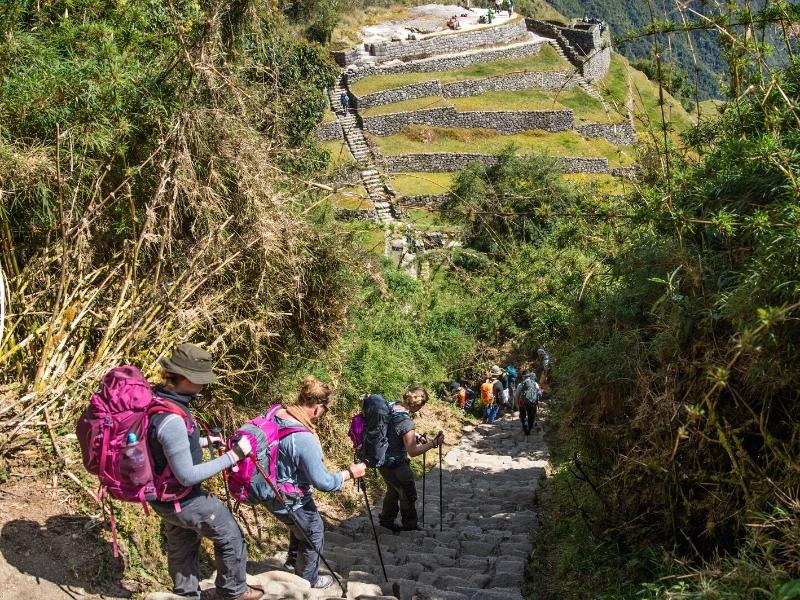
The 5-day Inca Trail to Machu Picchu is a trek that will show you the best landscapes and Inca ruins. This option is recommended for lovers of culture and a more leisurely pace of walking.
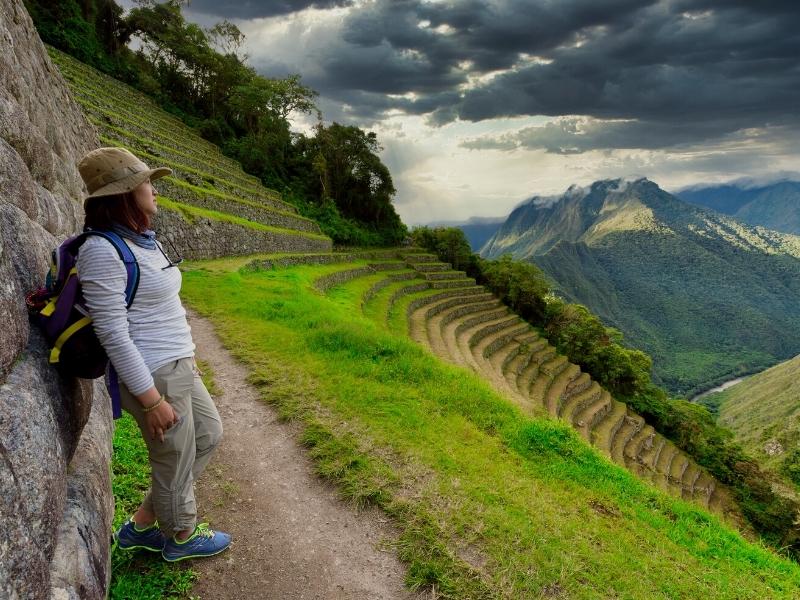
The 2-day Inca trail to Machu Picchu, is the shortest version of the Inca trail circuits to the sacred citadel of Machu Picchu. Andean Great Treks organize this trek with the best local guides and hotels in Machu Picchu. We work only in small groups, the premium service for your delight in Cusco.